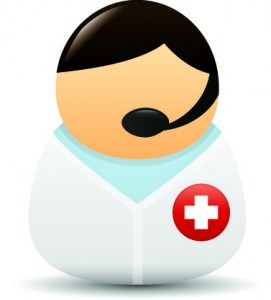Healthcare with Confidence
Urinary tract infection (UTI), also known as acute cystitis or bladder infection, affects part of the urinary tract. When infection affects the lower urinary tract it is a simple cystitis (bladder inflammation), and when affects the upper urinary tract, the disease is called pyelonephritis (kidney infection).
Lower urinary tract symptoms include painful urination or frequent urination or the urge to urinate or both, and symptoms of pyelonephritis include fever and pain in the side, in addition to symptoms of lower urinary tract. In elderly and young people symptoms can vary, be vague or nonspecific. The major cause of both types is E. coli, although in rare cases, there may be other bacteria, viruses or fungi.
Urinary tract infections are more common in women than in men, with half of women having at least one episode of infection at some point in their lives. Relapses are common. Risk factors include features of the female anatomy, the effects of sex and family history. Pyelonephritis, as a rule, is getting an infection in the bladder, but it can also be the result of infection through the blood received. Diagnosed in young, healthy women can be based on symptoms alone. In the case of vague symptoms, diagnosis is difficult to deliver because the bacteria can be present without infection. In such cases, you need to be tested for a urine culture.
In uncomplicated cases, urinary tract infections easily treated by short course of antibiotics, although resistance to many antibiotics used to treat this disease increases.
Sometimes the urine may contain pus (pyuria) due to urinary tract infection.
In children the only symptom of a urinary tract infection (UTI) may have fever. Infants may have a bad, which is accompanied by vomiting, drowsiness, or signs of jaundice. In older children symptoms of this incontinence (loss of bladder control).
The elderly are often the symptoms are very vague. This may be incontinent altered mental status or fatigue.
Causes of cystitis
E. coli is the cause of 80-85 % of urinary tract infections, Staphylococcus saprophyte is the cause in 5-10%. Occasionally they may be associated with viral or fungal infections. Other bacterial causes it Klebsiella, Proteus, Pseudomonas, Enterococcus and Enterobacter. But they are the cause in rare cases and usually associated with abnormalities of the urinary system. Urinary tract infections due to Staphylococcus aureus infections are generally caused by blood-borne.
The bacteria that cause urinary tract infections usually get into the bladder through the urethra. However, infection can also occur through blood or lymph. It is believed that bacteria are usually transferred from the intestine into the urethra. After gaining access to the bladder, E. Coli can be attached to the wall of the bladder and form a biofilm, which prevents the formation of the immune response.
In young sexually active women sexual activity is the cause of 75-90 % of cases of bladder infection, the risk of infection associated with the frequency of sex. In post-menopausal women sexual activity does not affect the risk of UTI. As estrogen levels in women decreases with menopause, the risk of urinary tract infections increases due to loss of protective vaginal flora.
Catheterization increases the risk of urinary tract infections.
Predisposition to bladder infections may be a family history. Other risk factors include diabetes, an enlarged prostate. Factors rather vague and include predisposing anatomic, functional, or metabolic disorders. In children UTI associated with abnormal movement of urine from the bladder into the ureters or kidneys, and constipation.
People with a spinal cord injury are at high risk of infection of the urinary tract partially due to constant usage of the catheter and partly due to bladder dysfunction. This is the most common cause of infection in this population as well as the most common cause of hospitalization.
Diagnostics
Necessary for the diagnosis of cystitis urine analysis to assess the level of nitrite in urine, white blood cells (WBCs) or leukocyte esterase. Another test urine microscopy is used to assess the erythrocytes, leukocytes, bacteria. Likewise, the use of these cultures is evaluated antibiotic sensitivity. This determines a choice of antibacterial therapy.
The diagnosis of cystitis in children lies in the analysis of urine – sowing urine culture.
Differential diagnosis
Cause of infection in women may be cervicitis (inflammation of the cervix) or vaginitis (inflammation of vagina), and young men with symptomatic UTI, Chlamydia or Neisseria gonorrheae. Vaginitis can also be associated with a yeast infection. Interstitial cystitis (chronic bladder pain) can occur in people who have multiple episodes of UTI symptoms, but urine cultures are negative, and there is no improvement with antibiotic treatment. Prostatitis (inflammation of the prostate) can also be considered in the differential diagnosis.
Hemorrhagic cystitis is characterized by the presence of blood in urine may occur again due to: infection due to radiotherapy of cancer, drugs and toxins. Drugs that usually cause this problem include chemotherapeutic agents. Eosinophilic cystitis is a rare condition when eosinophils are present in the bladder wall. Signs and symptoms of this disease are similar to a bladder infection. The reasons can be food allergies, infections, drugs and others.
Treatment of cystitis
Main treatment of cystitis is antibiotics course.
Treatment of asymptomatic bacteriuria (bacteria in the urine there but no symptoms) is usually not accompanied by antibiotics. When pregnancy is recommended antibiotics to 7 days. When no treatment cystitis, 30% of mothers may develop pyelonephritis, as well as an increased risk of low birth weight and preterm birth.
Complicated urinary tract infections are more difficult to treat and usually require very careful assessment and approach. Need to identify and remove a major complication.
Pyelonephritis is treated more thoroughly than a simple bladder infection with the use of a long course of antibiotics orally or intravenously.



